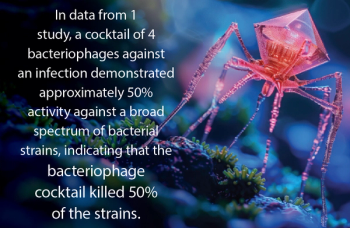
The Latest on CLABSIs and CAUTIs: Evidence-Based Approaches for Infection Prevention
Health care–associated infections like CLABSIs and CAUTIs threaten patient safety. Learn evidence-based strategies, new technologies, and prevention protocols to reduce these infections and improve outcomes.
Health care–associated infections (HAIs) continue to pose a significant challenge to patient safety in hospitals and health care facilities worldwide. Among the most common and severe HAIs are central line–associated bloodstream infections (CLABSIs) and catheter-associated urinary tract infections(CAUTIs). These infections compromise patient outcomes, increase health care costs, and lead to longer hospital stays. Recent advancements in evidence-based practices, updated clinical guidelines, and technological innovations have shown promise in reducing the incidence of these life-threatening infections.
CLABSIs: A Persistent Challenge in Critical Care
CLABSIs occur when pathogens enter the bloodstream through a central venous catheter or another access point, such as intra-arterial or peripheral intravenous catheters.1 These catheters are often essential for patients requiring long-term intravenous medication, fluids, or hemodynamic monitoring. However, their invasive nature places patients at heightened risk for infections. Despite a 13% decline in CLABSIs in 2023,2 they remain one of the most significant preventable HAIs in the US, with an estimated 41,000 cases reported annually, according to the CDC.3
Evidence-Based Strategies for CLABSI Prevention
Implementing evidence-based strategies is crucial to reduce CLABSI infections and improving patient safety. Below are key measures to prevent CLABSI effectively:
1. Central line bundles
CLABSI care bundles, introduced by the CDC and the Institute for Healthcare Improvement,4 outline evidence-based practices to reduce CLABSI risk.
These include:
• Hand hygiene: Washing hands or using alcohol-based hand sanitizers before touching the central line is fundamental to preventing contamination.
• Sterile insertion technique: Central line insertion must be performed using sterile barriers, including sterile gloves, drapes, and a mask for both the patient and the clinician. Ultrasound guidance during insertion has been shown to reduce complications.
• Daily review and maintenance: The necessity of a central line should be reassessed daily, and unnecessary central lines should be promptly removed. Using chlorhexidine gluconate for skin antisepsis during insertion has also been shown to reduce infection rates.
• Central line dressing and site care: Daily dressing changes and
antimicrobial-impregnated dressings can reduce infection risk.
2. Antimicrobial catheters and access ports
Antimicrobial-impregnated central venous catheters have shown promise in preventing CLABSIs, particularly in high-risk patients such as those in intensive care units. The CDC’s latest guidance suggests that these catheters, although beneficial in high-risk populations, should be used judiciously due to cost and the risk of resistance.5,6
3. Education and training
Regular staff education on infection prevention strategies, including aseptic techniques and the correct use of central line bundles, is critical. The CDC’s 2023 guidelines emphasize training health care personnel to recognize infection risks early and intervene appropriately.7,8
4. Trained nurse observers
Results of a study published in the American Journal of Infection Control suggest that creating a dedicated team of nurses to assist with central line insertions can significantly reduce the risk of patients developing bloodstream infections. The
The Role of Surveillance and Data-Driven Approaches
Surveillance systems, including real-time infection monitoring and feedback mechanisms, have been instrumental in reducing CLABSI rates. Hospitals and health care facilities that have integrated data tracking and outcome reporting into their infection control programs report significantly lower CLABSI rates.10-12 According to results of a 2024 study published in the American Journal of Infection Control, facilities with active surveillance and feedback mechanisms had a 36% reduction in CLABSI incidence over 5 quarters.13
“This project demonstrated the importance and impact of a dedicated CLABSI prevention nurse in CLABSI prevention, Sara Reese, PhD, an author of this study, said. “This role not only performed daily central line audits but also provided education to the nurses and a second set of hands for dressing changes and other line maintenance needs. A significant decrease in the CLABSI rate demonstrated the impact on patient safety.”14
CAUTIs: Prevention Through Vigilance and Protocols
CAUTIs are another common form of HAI. They occur when bacteria enter the urinary tract via an indwelling urinary catheter.15 With approximately 500,000 cases annually in the US, CAUTI prevention is a priority for infection control teams. The CDC reports that nearly 80% of UTIs in hospitalized patients are associated with a catheter, making CAUTIs a significant target for intervention.
According to investigators of a study published in BMJ Open Quality, “CAUTIs are also probably the most preventable HAIs; however, despite advances in diagnosis and treatment, CAUTIs continue to be a serious health care problem, accounting for up to 40% of hospital infections and 23% of infections in intensive care units (ICUs). CAUTIs have been shown to increase morbidity and mortality by 2.8-fold and the length of hospitalization by 1 to 3 days.”15
Evidence-Based Strategies for CAUTI Prevention
Using evidence-based strategies is also vital for reducing CAUTI infections and continuously improving the safety of both patients and staff. Key measures to prevent CAUTIs include:
1. Indications for catheter use
The first step in preventing CAUTIs is to minimize the use of indwelling urinary catheters. The CDC’s latest guidelines emphasize that catheters should only be used when necessary, such as for patients undergoing specific surgery or those with urinary retention due to neurological conditions.14 Routine use of catheters for convenience, such as monitoring urine output, should be avoided.16
2. Proper catheter insertion and maintenance
Once catheterization is deemed necessary, proper insertion techniques are critical. The CDC recommends using a sterile technique during insertion and ensuring that the catheter is placed using the smallest size possible for the clinical situation.14 The CDC’s CAUTI guidelines14 also recommend maintaining a closed drainage system to avoid contamination, securing the catheter to prevent movement or pulling, and assessing catheter necessity daily. Ensuring the catheter is not obstructed, and the drainage system is always correctly positioned below the patient’s bladder can help minimize infection risks.
3. Use of antimicrobial coatings
Research has demonstrated that antimicrobial-coated catheters may significantly reduce the incidence of CAUTIs in specific high-risk patient populations.17-20 The Agency for Healthcare Research and Quality20 and CDC14,19 highlights antimicrobial-coated catheters as part of its infection prevention recommendations, particularly for patients who require long-term catheterization.
4. Patient education and engagement
Another critical component of preventing CAUTIs is educating patients on the risks associated with urinary catheters and the signs and symptoms of infection. Encouraging patients to voice concerns or discomfort can help detect infections early. A study by Mangal, et al, highlights the importance of CAUTI prevention.21
Moving Forward in Infection Control
As CLABSIs and CAUTIs remain significant concerns in health care settings, evidence-based practices are critical for reducing their incidence and improving patient safety. Health care facilities can significantly reduce common and preventable infections by following updated CDC and WHO guidelines, utilizing infection prevention bundles, and adopting new technologies.
Collaboration, education, and surveillance will continue to be the pillars of successful infection control programs. Health care organizations must stay current with the latest research and guidelines to protect patients and provide high-quality, safe care in today’s health care environments.
References
- Hayes J, Miller M. CLABSI culprits in critical care: looking beyond the expected portal of entry. Infection Control Today. Accessed November 25, 2024.
https://www.infectioncontroltoday.com/view/clabsi-culprits-critical-care-looking-beyond-expected-portal-entry - Current HAI progress report. CDC. November 25, 2024. Accessed January 2, 2025.
https://www.cdc.gov/healthcare-associated-infections/php/data/progress-report.html - Central line-associated bloodstream infections (CLABSI). Johns Hopkins Medicine. Accessed January 2, 2025.
https://www.hopkinsmedicine.org/patient-safety/infection-prevention#:~:text=The%20Centers%20for%20Disease%20Control,central%20lines%20in%20U.S.%20hospitals - Gupta P, Thomas M, Patel A, et al. Bundle approach used to achieve zero central line-associated bloodstream infections in an adult coronary intensive care unit. BMJ Open Qual. 2021;10(1):e001200. doi:10.1136/bmjoq-2020-001200
- Wassil SK, Crill CM, Phelps SJ. Antimicrobial impregnated catheters in the prevention of catheter-related bloodstream infection in hospitalized patients. J Pediatr Pharmacol Ther. 2007;12(2):77-90. doi:10.5863/1551-6776-12.2.77
- Deng Z, Qin J, Sun H, Xv F, Ma Y. Effectiveness of impregnated central venous catheters on catheter-related bloodstream infection in pediatrics. Front Pediatr. 2022;10:795019. doi:10.3389/fped.2022.795019
- Intravascular catheter-related infection (BSI) prevention guidelines. CDC. April 12, 2024. Accessed January 2, 2025.
https://www.cdc.gov/infection-control/hcp/intravascular-catheter-related-infection/index.html - Healthcare-associated infections (HAIs). CDC. Accessed January 2, 2025.
https://www.cdc.gov/healthcare-associated-infections/index.html - Reducing CLABSIs: 47% impact with trained nurse observers and catheter insertion teams. Infection Control Today. Accessed January 2, 2025.
https://www.infectioncontroltoday.com/view/reducing-clabsis-47-impact-trained-nurse-observers-catheter-insertion-teams - Rosenthal VD, Memish ZA, Shweta F, Bearman G, Lutwick LI. Preventing central line-associated bloodstream infections: a position paper of the International Society for Infectious Diseases, 2024 update. Int J Infect Dis. 2025;150:107290. doi:10.1016/j.ijid.2024.107290
- Latif A, Ali W, Haleem S, et al. Implementation and long-term efficacy of a multifaceted intervention to reduce central line-associated bloodstream infections in intensive care units of a low-middle-income country. Am J Infect Control. 2024;52(7):819-826. doi:10.1016/j.ajic.2024.02.001
- Buetti N, Marschall J, Drees M, et al. Strategies to prevent central line-associated bloodstream infections in acute-care hospitals: 2022 update. Infect Control Hosp Epidemiol. 2022;43(5):553-569. doi:10.1017/ice.2022.87
- Star KE, Lindsey K, Reese SM, et al. Reducing central line-associated bloodstream infection with a dedicated CLABSI prevention registered nurse role. Am J Infect Control. 2024;52(6):659-663. doi:10.1016/j.ajic.2023.11.021
- Catheter-associated urinary tract infections (CAUTI). CDC. April 12, 2024. Accessed January 2, 2025.
https://www.cdc.gov/infection-control/hcp/cauti/index.html - Gupta P, Thomas M, Mathews L, et al. Reducing catheter-associated urinary tract infections in the cardiac intensive care unit with a coordinated strategy and nursing staff empowerment. BMJ Open Qual. 2023;12(2):e002214. doi:10.1136/bmjoq-2022-002214
- Kanti SPY, Csóka I, Jójárt-Laczkovich O, Adalbert L. Recent advances in antimicrobial coatings and material modification strategies for preventing urinary catheter-associated complications. Biomedicines. 2022;10(10):2580. doi:10.3390/biomedicines10102580
- Moussa A, Ahmed E, Ismail M, et al. The silver-coated silicone catheters significantly reduced the incidence of CAUTI compared to the uncoated catheters. J Family Med Prim Care. 2022;11(11):6822-6829. doi:10.4103/jfmpc.jfmpc_1179_22. Available from:
https://www.ncbi.nlm.nih.gov/pmc/articles/PMC9599887/ - Jacob JT, DiazGranados CA, Levinson J, et al. Preventing catheter-associated urinary tract infections: a national analysis of patient safety practices. Am J Infect Control. 2023;51(1):15-21. doi:10.1016/j.ajic.2022.10.007. Available from:
https://pubmed.ncbi.nlm.nih.gov/36289841/ - Summary of recommendations: catheter-associated urinary tract infection (CAUTI) prevention. CDC. Updated October 2022. Accessed April 16, 2025.
https://www.cdc.gov/infection-control/hcp/cauti/summary-of-recommendations.html - Toolkit for reducing catheter-associated urinary tract infections in hospital units: implementation guide. Agency for Healthcare Research and Quality. Accessed January 2, 2025.
https://www.ahrq.gov/hai/cauti-tools/guides/implguide-pt3.html - Mangal S, Pho A, Arcia A, Carter E. Patient and Family Engagement in Catheter-Associated Urinary Tract Infection (CAUTI) Prevention: A Systematic Review. Jt Comm J Qual Patient Saf. 2021 Sep;47(9):591-603. doi: 10.1016/j.jcjq.2021.05.009. Epub 2021 May 31. PMID: 34215555; PMCID: PMC8506981.
Newsletter
Stay prepared and protected with Infection Control Today's newsletter, delivering essential updates, best practices, and expert insights for infection preventionists.






